A weird and futuristic construction from the archives. Really easy to tie... eh, make... uhm... construct... Metal, plastic and glue.
This pattern is an experimental fly that I tied - or rather constructed - many, many years ago. Not so long ago I was going through my image archive from the heydays, and these two old images popped up. They were so old that they were scans. Back then I simply put the flies in a flatbed scanner and scanned them.
Not big art when it comes to photography, but OK for documentation. And I liked what was in these two scans. They were both dated spring 2001.
I remembered the fly, which I made using some of André Bidoz' metal bottle tubes that I helped develop. I used it when fished from a float tube and wanted a small pelagic baitfish imitation. In spite of the "stiff" appearance of the fly, it's very lively in the water.
The tubes come in aluminum and brass in two different lengths and André has recently introduced a thinner version, making it possible to make smaller and even lighter flies. You can vary the weight and look of the fly by choosing different bottle tubes.
I have a bunch of these bottles and now fish a lot from a pontoon boat, so it was obvious to fiddle around with this idea again and develop it into something fishable and useful.
Since a all my fishing these days take place sailing, I can troll the flies, and a fly like this will most likely do good when pulled and jigged after a boat.
The basic idea is very simple:
A Bidoz tube of my own design as a head, done up with some eyes secured with some epoxy, hot melt glue or LCR - Light Cured Resin - the new black in fly-tying. On my old prototypes I added a few turns of red thread to create an impression of gills. It's still an option.
The body of the fly is formed by the junction tube that usually secures the hook on the tube. But on this fly it's been extended and creates the body.
The tail is tied on the hook and was simply a bunch of flash on the original fly, but might work better if tied with feathers. There's room for some experiments here.
You could also add a little movement in the front of the fly, and something looking like fins might be an idea. It can be feathers, rubber legs or whatnot. I'll keep mine simple, but you can easily work your way towards something.
Remember to line the metal tube before you use it. You can do that before or after the head is finished, but do it, because the raw tube will cut through your tippet like a knife through butter, and the fly will be gone after a few casts.
I have a lot of semi-soft, translucent tube in different colors from The Canadian Tube Company, which will probably work perfectly for this fly. I also have a length of very soft milky silicone tube, which I can also imagine will work fine. The options and variations are many.
|
|
|
|
|
|
|
|
|
|
|
|
|
|
|
|
|
|
|
|
|
|
|
- Log in to post comments

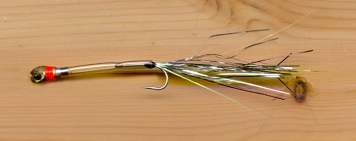



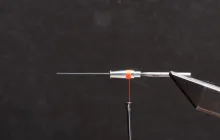


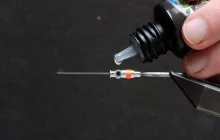

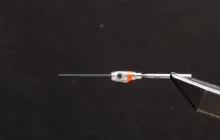

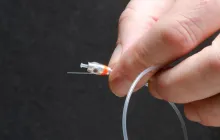













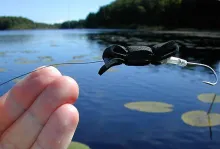



This will be great f
This will be great for trout, salmon and bass in the early season. Thanks